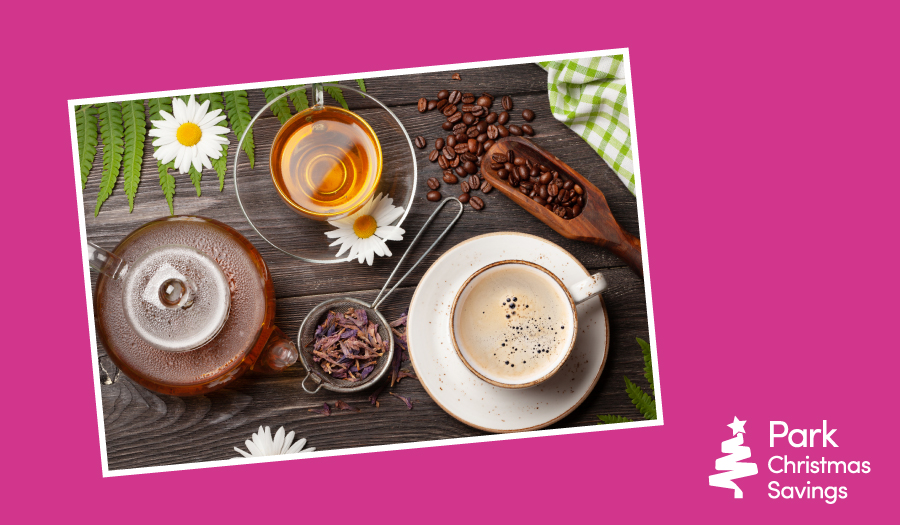
Fancy a cuppa? Delve into the world’s most popular teas
This National Tea Day, your friends at Park HQ have put together a top 10 list of teas from around the world.
Date:
18 April, 2023

It’s a brew-tea-ful day!
Who doesn’t love a good cup of tea? It’s the third most popular drink in the world, behind cola and coffee, and we all enjoy it for different reasons. Some like it for its calming effect (for centuries people have drunk tea to help reduce stress and anxiety), for others, it’s a routine, something they learned as a child from watching their parents or grandparents. How many of us start our days with a cuppa?
Known as 'the most British Day of the year', National Tea Day is celebrated every year on 21st April. It's about raising a glass (or should we say cup) to the nation's favourite beverage. In 2022, more than 60 billion cups of tea were drank by Brits. This is around 165 million cuppas a day! National Tea Day also coincides with the global holiday - International Tea Day.
In 2005, the International Tea Day campaign was first established by trade unions, tea growers and civil society organisations located throughout Asia and Africa. The founders wanted to address issues around workers' pay, as well as making sure tea producers were offered a fair price for their goods.
By 2019, the United Nations had adopted International Tea Day as a global holiday. It’s observed every year on 21st May. The heart of the message is the same, but there’s new focus, with climate change, technological developments and changing consumer habits all taking centre stage. Around 150 representatives from countries all over the world come together for high-level discussions about these challenges.

In celebration of International Tea Day, Park’s saving experts have come together to make the ultimate list of teas from around the world. How many have you tried? Why not pop the kettle on and get a brew on the go? Pick one of these teas and let your mind take you on a little adventure...
Let’s get this par-tea started!
As we start our tea journey, let’s not forget, these teas may come from across the world, but they can all be bought at our favourite high-street retailers. From browsing the huge range of specialty teas at M&S, to exploring the origins of household staples like PG Tips, Yorkshire Tea and Tetley at Sainsbury’s – all tea has a story to tell.
- Earl Grey. Originating back in 1831, this breakfast tea flavoured with bergamot is quintessentially British. According to legend it was made at the request of Prime Minster Charles Grey, the 2nd Earl Grey, although history suggests it was first blended long after his death. It is also a favourite of the character Jean-Luc Picard in Star Trek, the Next Generation and there is an alternative called Lady Grey, a black tea with a zesty note of orange.
- Mint. Moroccan mint tea has a long history in the country, likely introduced in the mid-19th century by an English trader. However, there’s many different stories about how Moroccan mint tea came to be. It’s often served alongside traditional dishes such as tajine, tanjia or B’Sara. Having mint tea with a dash of honey is a win for those of us with a sweet tooth.
- Camomile. Often cited as a natural remedy for the likes of stress, anxiety and sleep problems, camomile tea contains a whole host of nutrients like flavonoids; which reportedly has medicinal properties. The herb the tea gets its name from can be found in Europe, Africa, and Asia.
- Rooibos. Also known as red bush tea, it’s been used in southern Africa for years. An herbal tea filled with antioxidants, rooibos tea also has health benefits. Plus, it’s a caffeine-free alternative to black and green tea.
- Darjeeling. Known as the champagne of tea, Darjeeling takes its name from the Indian town of the same name. It has an aromatic flavour drawn from the nutrient-rich soils in the foothills of the Himalayas, where it is grown.
- Oolong. This is a traditional Chinese tea, made from the same leaves used to make green tea. According to tea experts, oolong tea contains several vitamins, minerals, as well as antioxidants. It’s mainly produced in China's Fujian and Guangdong provinces and Taiwan.
- Green tea. Another Chinese tea, it’s thought Yunnan province is where green tea – believed to help with digestion – comes from. It can be traced all the way back to 2737 BC, imagine how many cups of green tea have been drunk since then! A popular legend of its origin claims Emperor Shennog (widely regarded as the forefather of Chinese medicine) was sitting outside and watched fresh tea leaves fall into his cup of boiled water.
- Jasmine. First introduced during the Song Dynasty, it’s believed Jasmine tea was first brought to China by Indian merchants. The tea has a sweet aroma, its scent coming from the jasmine blossom it's made with.
- Chai. At over 5,000 years old, chai tea is one of the oldest on this list. It’s said a king first discovered the healing properties of chai tea after drinking it when sick. He felt immediately better, and praised the beverage for its herbs and spices.
- Matcha. Hailing from Japan, matcha tea has really taken off in the last few years. Celebrities are quick to praise it for the health benefits it packs, and it’s also been shown to help achieve weight loss. It has a slightly bitter taste, which is thanks to green tea powder.


